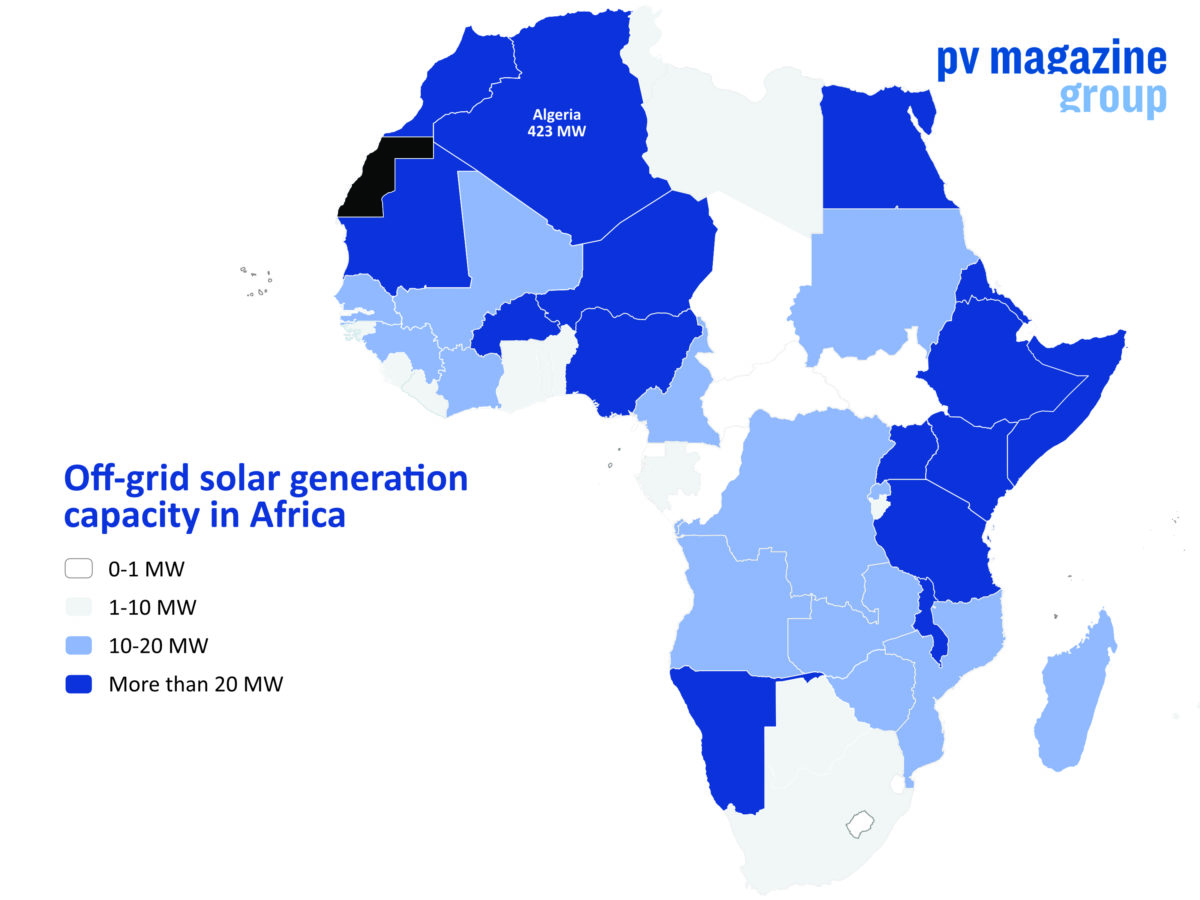A report compiled by the International Renewable Energy Agency (IRENA) and the African Development Bank (AfDB) has shed light on the regional disparities evident across Africa's renewable energy industry, whilst reinforcing the message far more money is required to achieve the UN development goal of providing universal access to electricity by 2030.
The Renewable Energy Market Analysis: Africa and its Regions study highlights the strong progress made in deploying solar equipment in East Africa, notably in Kenya, and also spells out how far behind the Central Africa region is lagging.
Between 2016 and 2019, around 8.5 million people in sub-Saharan Africa gained access to some form of solar equipment, ranging from solar lights to mini-grid connections, according to the report, with the East Africa region leading the way.
pv magazine print edition
Get the latest edition of pv magazine today to read about the kinks in the global supply chain which, like the mixed-bag outcome of COP26, have kept a significant portion of this year’s progress tangled up. We find more to celebrate than condemn, however, for 2021 was another record year for solar installations, and the forecasts for this year look even more promising.
With 1,500 clean energy mini-grids operating across the continent today, according to the authors of the study, and plans laid for a further 4,000, almost 700,000 people have access to electricity connections from such systems.
The AfDB-IRENA document noted 17 million Kenyans have been provided with access to some form of solar equipment since 2010, in an East Africa region which, according to IRENA, boasts 1.06TW of Africa's total technical solar generation capacity potential of 7.9TW.
And with four times more people in East Africa than in Southern Africa using some form of decentralized energy system at the end of 2019, Kenya accounted for 42% of such regional equipment, well clear of Ethiopia, which accounted for the second largest proportion, with 21%.
Popular content
The contrast with Central Africa was clear, according to the report, with a relatively few 3.5 million people in that region using solar lanterns and only 294,000 or so enjoying access to mini-grid connections in a region in which only 32% of people have access to electricity and only 17% benefit from clean cooking facilities.
In populous West Africa, the report noted, around 10 million people had access to some form of solar in 2019.
The continent may have accounted for 70% of global spending on off-grid renewables from 2010 to 2020 – securing $1.7 billion – but clean energy investment has fallen back dramatically since peaking at $10.3 billion in 2018, with almost half of that year's figure – $5.2 billion – invested in photovoltaics and solar thermal equipment. That bumper year saw the installation of 2.9GW of the 10.4GW of solar generation capacity – including concentrating solar plants – which arrived between 2010 and 2020 in Africa.
Since then, though, IRENA and the AfDB noted, investment has fallen back to average $1.3 billion per year in 2019 and 2020, ensuring the dream of providing universal access to electricity this decade appears as far away as ever.
This content is protected by copyright and may not be reused. If you want to cooperate with us and would like to reuse some of our content, please contact: editors@pv-magazine.com.


Hi,
The value for the average annual investments in 2019 and 2020 is not correct in the article. According to the report, it was USD 3.1 billion.
“Annual investments peaked in 2018, reaching an all-time-high of USD 10.3 billion before dropping to an annual average of USD 3.1 billion in 2019-2020. “
Hi Zsolt,
Having checked the report’s wording, it is indeed as you indicate but that in itself makes it unclear whether the $3.1 billion figure relates to two separate years (2019 and 2020) or to one fiscal year (2019-20). Usually when one sees the formula 2019-20 it refers to a period spanning two calendar years, such as a fiscal year, football season etc, but that formula was used in a section of this report which referred to individual calendar years. In fact, the use of “annual average” beforehand in this case would indicate our correspondent was correct in thinking $3.1 billion was the average figure for both the calendar years 2019 and 2020. The way the report has been worded, however, makes it impossible to say with any absolute certainty. Also, the way you have worded your contribution would also indicate you think our correspondent has actually got it correct, as Cosmas has here stated the $3.1 billion figure related to the average in two separate calendar years.